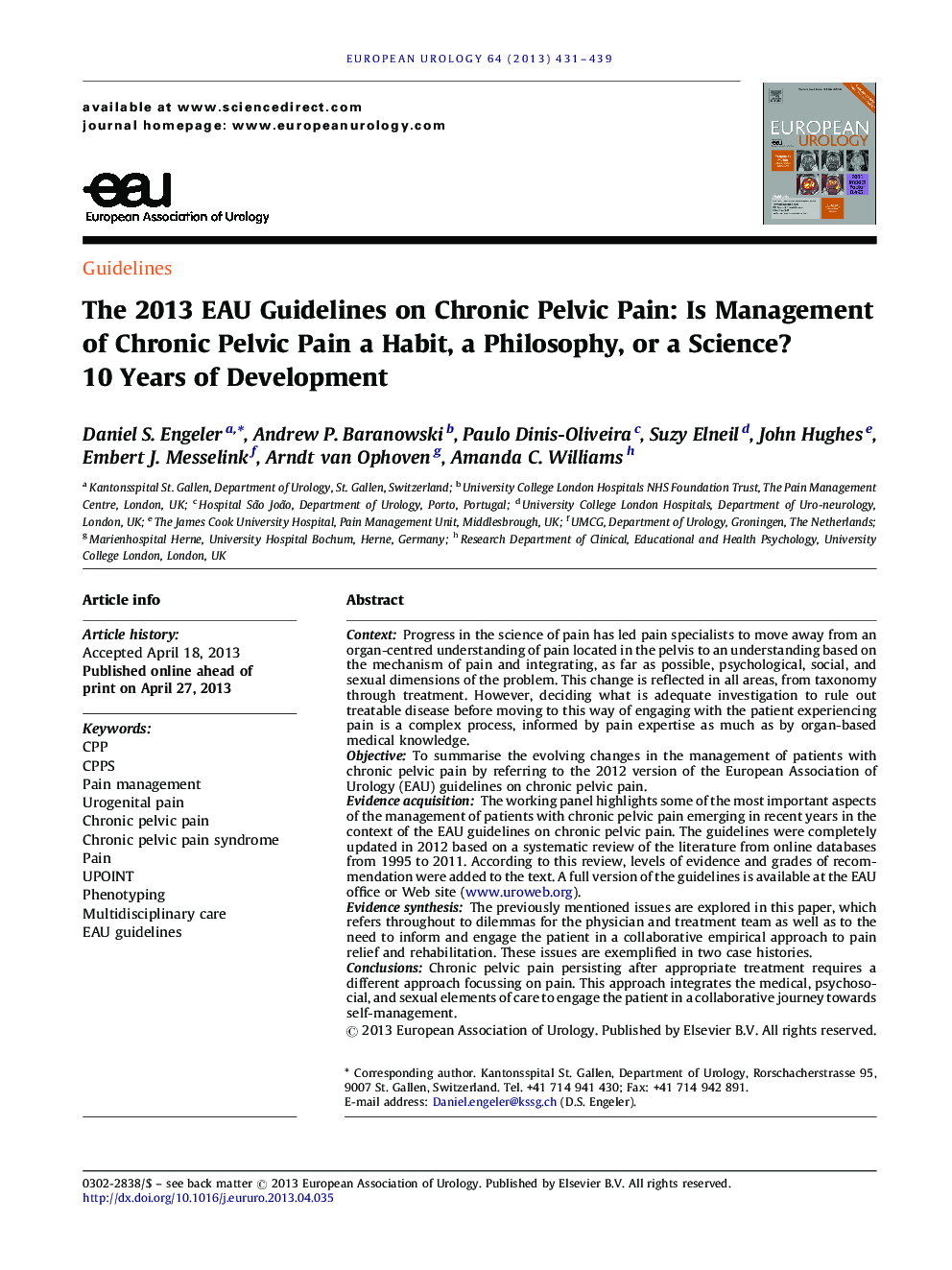| کد مقاله | کد نشریه | سال انتشار | مقاله انگلیسی | نسخه تمام متن |
|---|---|---|---|---|
| 3925752 | 1253134 | 2013 | 9 صفحه PDF | دانلود رایگان |

ContextProgress in the science of pain has led pain specialists to move away from an organ-centred understanding of pain located in the pelvis to an understanding based on the mechanism of pain and integrating, as far as possible, psychological, social, and sexual dimensions of the problem. This change is reflected in all areas, from taxonomy through treatment. However, deciding what is adequate investigation to rule out treatable disease before moving to this way of engaging with the patient experiencing pain is a complex process, informed by pain expertise as much as by organ-based medical knowledge.ObjectiveTo summarise the evolving changes in the management of patients with chronic pelvic pain by referring to the 2012 version of the European Association of Urology (EAU) guidelines on chronic pelvic pain.Evidence acquisitionThe working panel highlights some of the most important aspects of the management of patients with chronic pelvic pain emerging in recent years in the context of the EAU guidelines on chronic pelvic pain. The guidelines were completely updated in 2012 based on a systematic review of the literature from online databases from 1995 to 2011. According to this review, levels of evidence and grades of recommendation were added to the text. A full version of the guidelines is available at the EAU office or Web site (www.uroweb.org).Evidence synthesisThe previously mentioned issues are explored in this paper, which refers throughout to dilemmas for the physician and treatment team as well as to the need to inform and engage the patient in a collaborative empirical approach to pain relief and rehabilitation. These issues are exemplified in two case histories.ConclusionsChronic pelvic pain persisting after appropriate treatment requires a different approach focussing on pain. This approach integrates the medical, psychosocial, and sexual elements of care to engage the patient in a collaborative journey towards self-management.
Journal: European Urology - Volume 64, Issue 3, September 2013, Pages 431–439